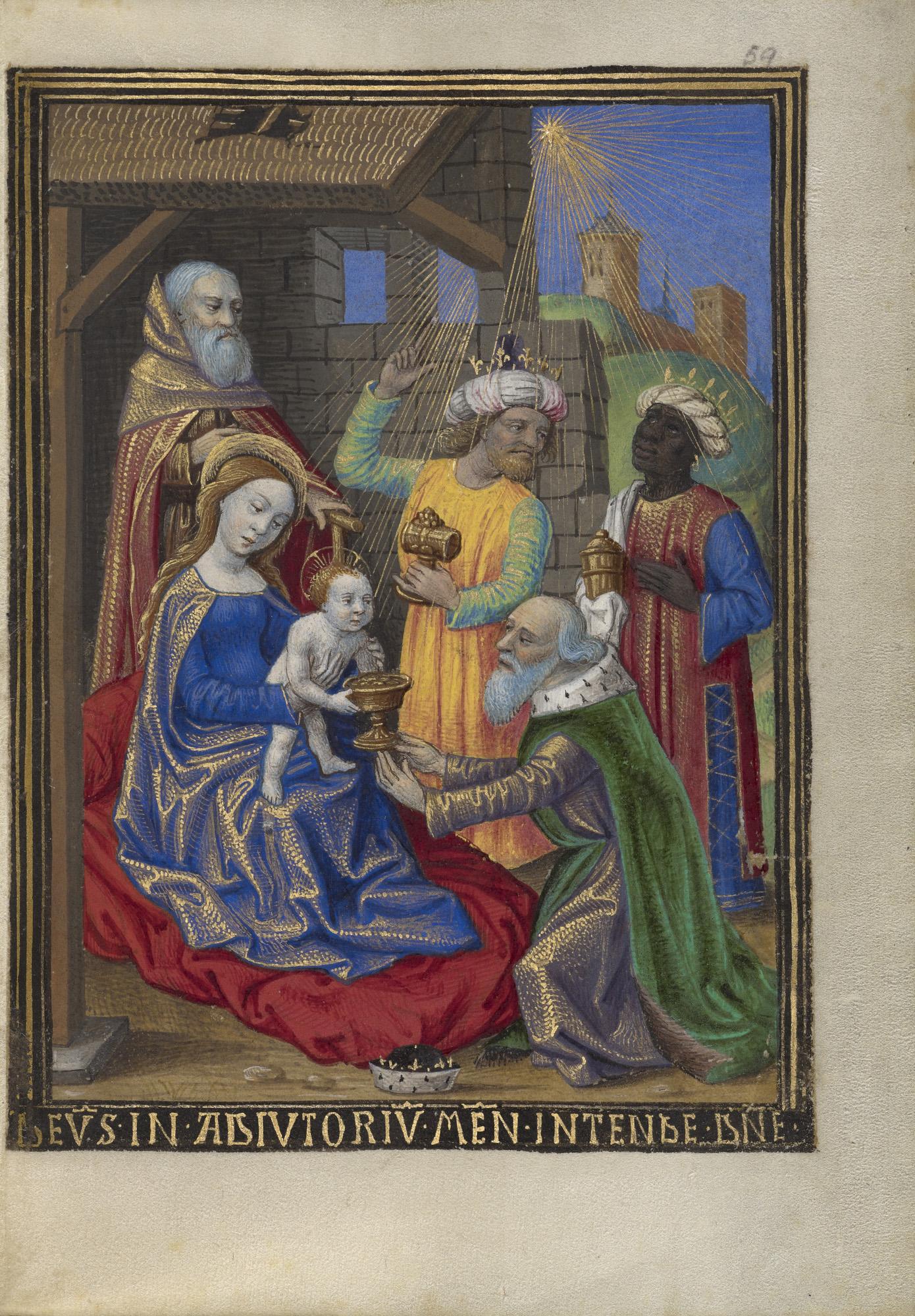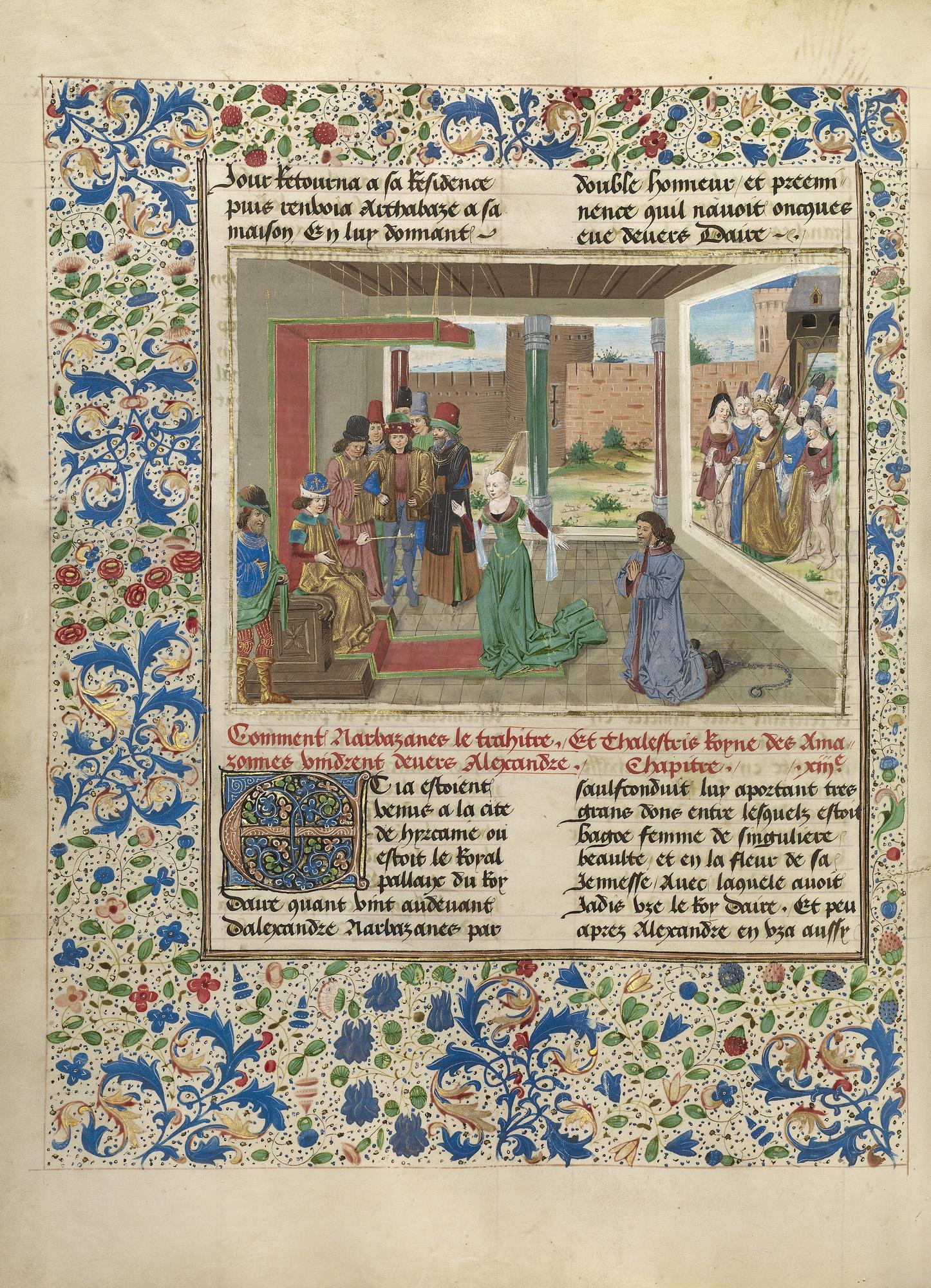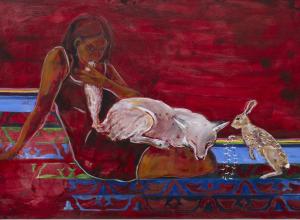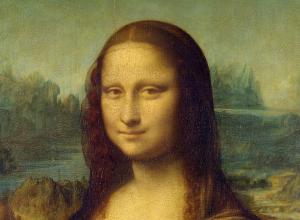Cis-gender women and Muslims often fared no better in the medieval world. The Merovingian queen Brunhilde, a powerful heroic figure who led armies and ruled over kingdoms, fell victim to the misogyny of later medieval authors who cast her as the archetypal “nasty woman.” In Giovanni Boccaccio’s story of The Death of Brunhilde, Queen of France (1413-15) he described Brunhilde as ruthless and vengeful, characterizations that were also applied to Saracens, a pejorative medieval term for Muslims. This parallel may explain the turbaned figures in the margins of this manuscript. In medieval art, the “Saracen” became a catch-all category of people to be feared.
Color conveyed a range of meanings in medieval art. Blackness not only signified race and ethnicity, but also symbolized the absence of light, and thus, God. Demons were often rendered in shades of black or dark browns and grays. In Initial Q: David Before Saul (after 1205), color appears to have been used in both ways. In a jealous rage, King Saul draws a sword on the young David. King Saul’s melancholic temperament is conveyed not only through his actions but also by the dark-skinned demon who resembles caricatured representations of Africans, Jews, and Muslims found elsewhere in the late twelfth and early thirteenth centuries, a period of extreme intolerance and violence.
According to Bryan C. Keene, assistant curator of manuscripts and co-curator of the exhibition, “This exhibition strives to make connections between the Middle Ages and the contemporary world, specifically in the way rhetoric is used to construct society’s ‘out groups.’ Attitudes toward Jews and Muslims, the poor, those perceived as sexual or gender deviants, and the foreign peoples beyond European borders can be discerned through caricature and polemical imagery, as well as through marks of erasure and censorship.”
In an attempt to respond to possible concerns from audiences, the exhibition curators also reached out through the Getty blog and Tumblr, inviting members of the public to comment on the exhibition text as it was being drafted. That ongoing conversation can be found on the Getty Iris.
Outcasts: Prejudice & Persecution in the Medieval World is curated by Kristen Collins, curator in the Manuscripts Department and Bryan C. Keene, assistant curator in the Manuscripts Department. The exhibition is on view at the J. Paul Getty Museum at the Getty Center from January 30 –April 8, 2018. Related programming includes “Sexuality, Sanctity, and Censorship: A Conversation with Artist Ron Athey,” a discussion about sexuality, gender identity, and censorship in relation to the exhibition and, “Anti-Semitism and Islamophobia in the Middle Ages and Today” a panel discussion featuring Sara Lipton, Hussein Fancy, and Jihad Turk.

























